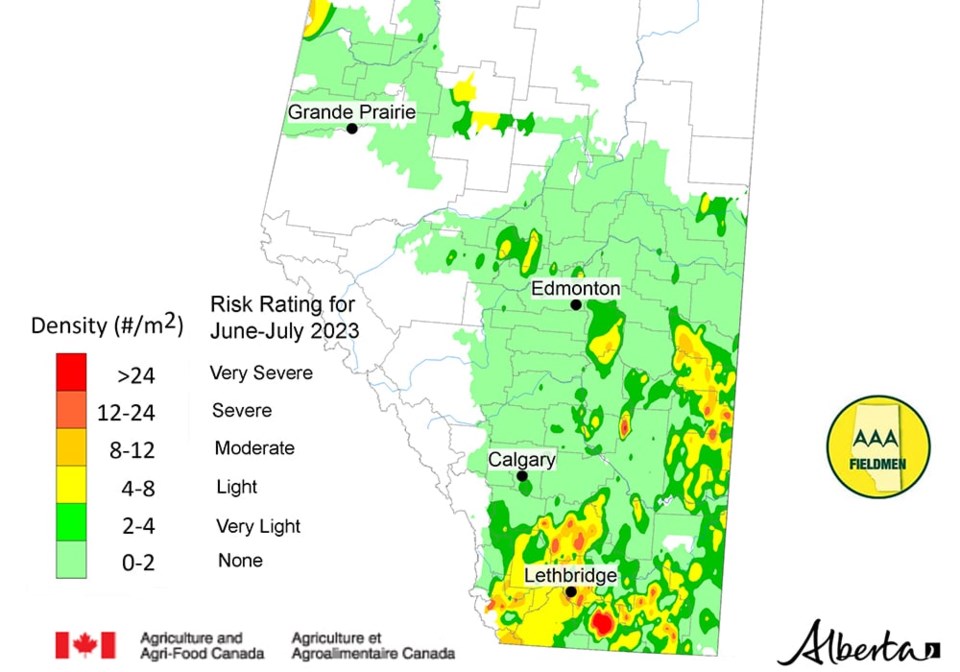Alberta’s 2023 grasshopper forecast predicts areas around Lethbridge will see large populations, while north-central areas will be less affected by the pest.
The forecast is based on adult population numbers collected across the province in August 2022.
The Peace region is expected to see moderately high numbers in pockets, while the north-central region overall is expected to see zero to two grasshoppers per sq. metre.
Southern Alberta is a different story. The worst infestations are projected for the Lethbridge area, which is expected to see moderate to very severe populations. South-central and southeastern regions are also expected to see increased numbers but shouldn’t be as had hit as the southwest.
Dan Johnson, professor of environmental science and entomologist at the University of Lethbridge, said the provincial forecasts have proven over the years to be fairly accurate.
But there is one caveat.
“It’s only done once a year,” said Johnson of the survey. “It’s like if we were going to study ducks or deer and the only time we collect any data is just before mating season.”
He said Alberta has funded a spring survey of grasshoppers a couple times during the past 40 years, “and it added so much accuracy.
“It was great because then you could look at overwintering loss, if there was any reduction in May because of slow heating or early June because of rain — those are important factors.”
Regarding southern Alberta, Johnson said 2021 and 2022 both saw variabilities in the modelling where some spots could see up to 50 grasshoppers per sq. metre but a few kilometres down the road there would be none.
“The problem with that is in the past when we’ve had those variable years, it usually meant (populations) were on the way up if the weather was appropriate for them in the summer,” he said. “If this spring is warm and it warms very quickly and then if it stays warm in June and July, that population will definitely go up.”
Grasshopper species that impact wheat and barley are particularly sensitive to precipitation in early June during their growth period and July during breeding with populations lowered during such periods.
As for the Peace region, the provincial survey highlighted the pattern of the Bruner’s spur-throat grasshopper of emerging as a possible threat to crops during odd years in the species’ two-year lifecycle.
Johnson said while that species often devastates alfalfa crops, it prefers thistle over wheat crops and he’s observed some instances of Bruner’s going after canola.
He added that since the province has incorporated the Bruner’s lifecycle into its predictive modelling, it’s been far more accurate in anticipating grasshopper numbers in the region.
Johnson said producers can get a good handle on their local conditions by surveying roadside culverts.
Data Johnson has collected over the years comparing field and roadside surveys have shown a strong correlation.
“If it’s not convenient or there isn’t enough time to go out into the fields, roadside counts are accurate. It’s good enough for mapping the population, which really saves a lot of time,” he said.



